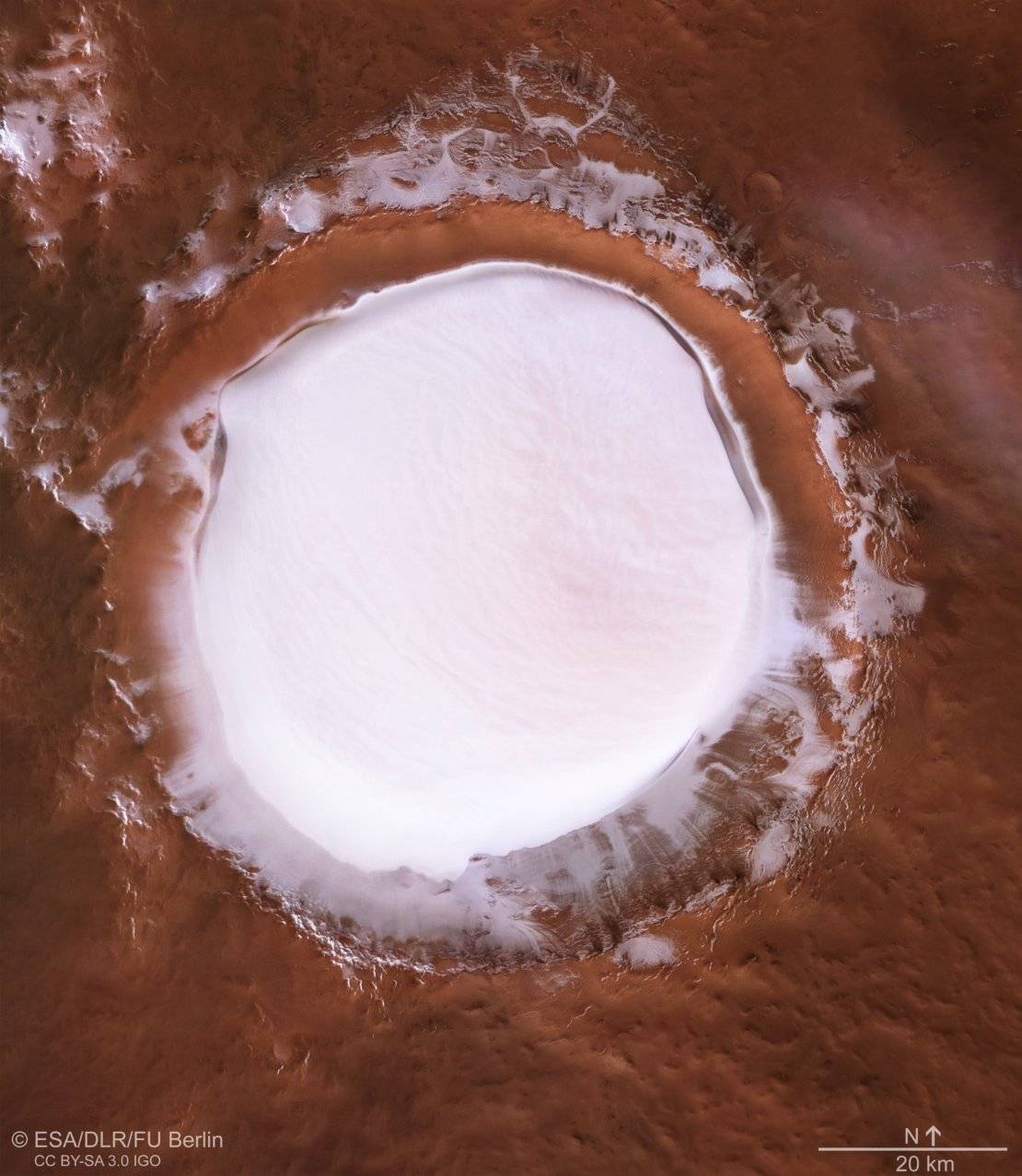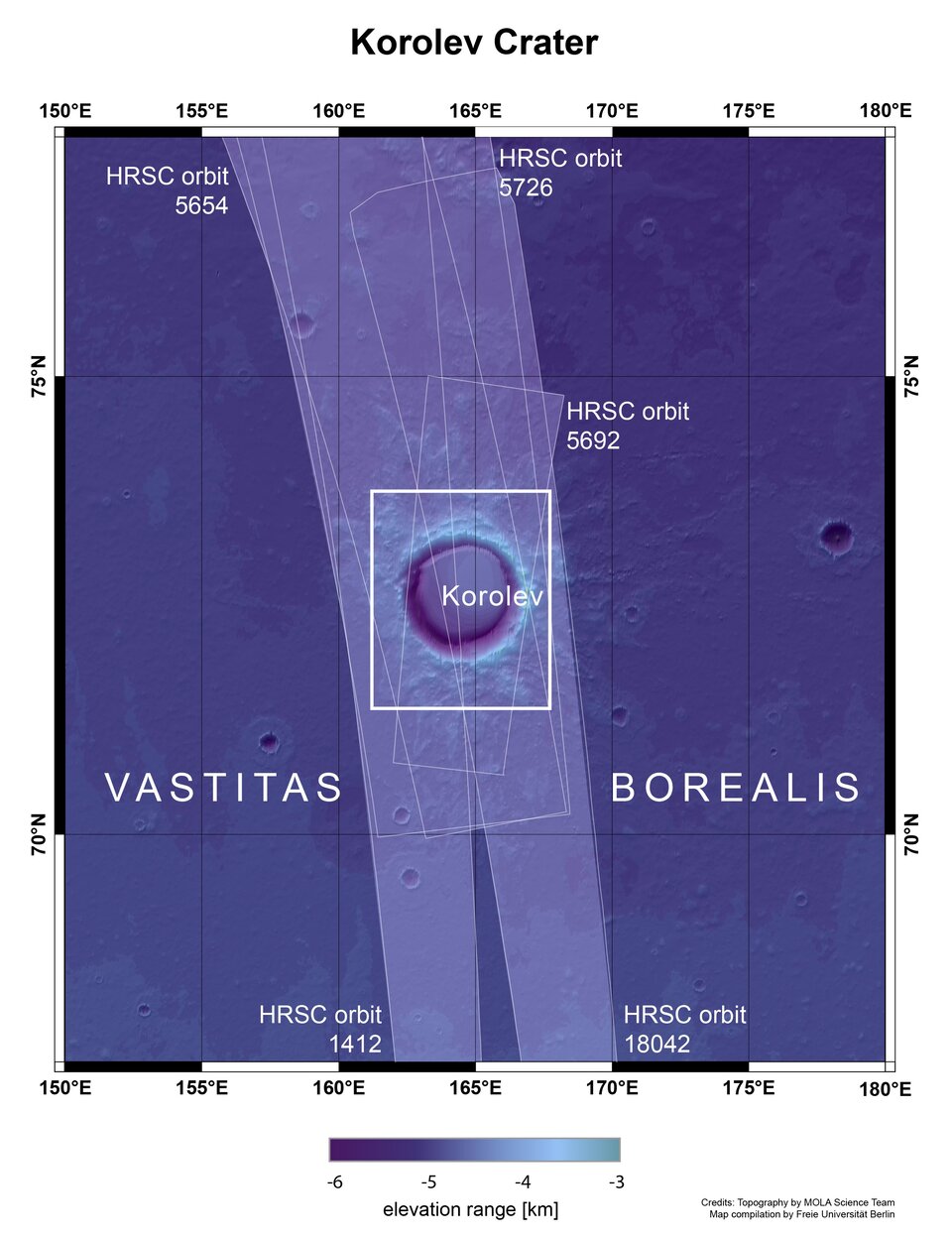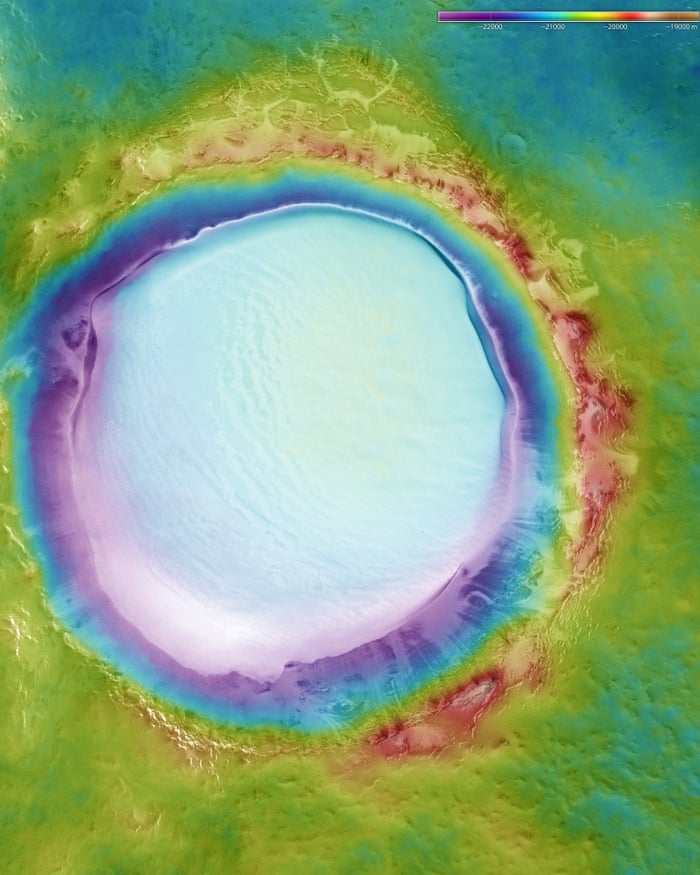
The European Space Agency has released stunning new footage of a huge icy Martian lake. The lake is found in the Korolev crater which is located in Mars’ northern lowlands. The crater was created by an asteroid impact, and its unique shape helps preserve the ice.
The European Space Agency, or ESA, captured the footage of the Korolev crater using the Mars Express High Resolution Stereo camera aboard the Mars Express satellite. Mars Express launched on June 2, 2003, and is expected to continue conducting research through 2022. This will make it the second longest operational satellite orbiting a non-Earth celestial body behind NASA’s 2001 Mars Odyssey.

The Korolev crater is named after the father of Soviet space technology, Sergei Korolev. The crater can be found in the northern lowlands of Mars, south of Olympia Undae. Olympia Undae is a vast dune field or erg that partially encircles Mars’ north pole. Mars Express captured images of the crater during multiple orbits. These images were then pieced together to create a complete image. Finally, the ESA created a flyover video of the crater using many different images.

The Korolev crater is 50.6 miles in diameter. The crater rim is 1.2 miles higher than the surrounding plain, and it is 1.2 miles deep. The Korolev crater contains a permanent ice sheet 1.1 miles thick and 37 miles in diameter, about the same size as Earth’s Great Bear Lake in Canada.

Because of the depth of the crater, a phenomenon known as cold trap occurs. Air moving near the ice in the crater’s depths is cooled. This cold air sinks, creating a layer of cold air over the ice. Because air is a poor conductor of heat, this layer of cold air acts as a shield for the ice by preventing the ice from melting.